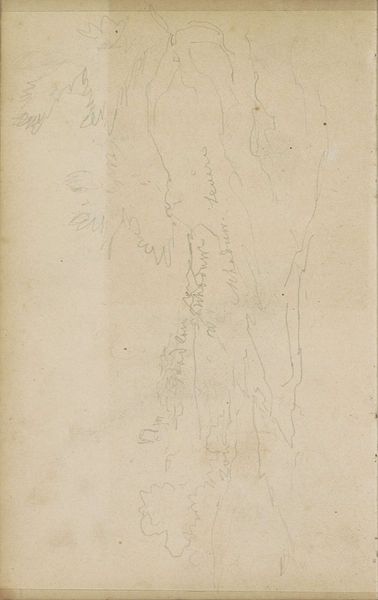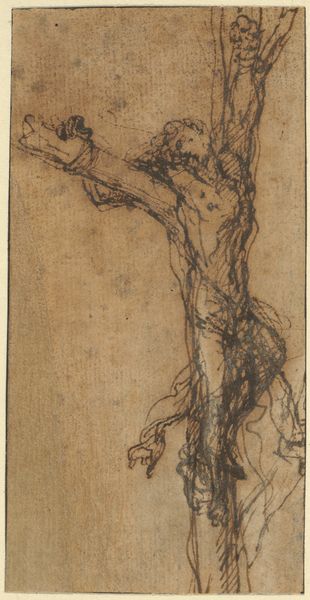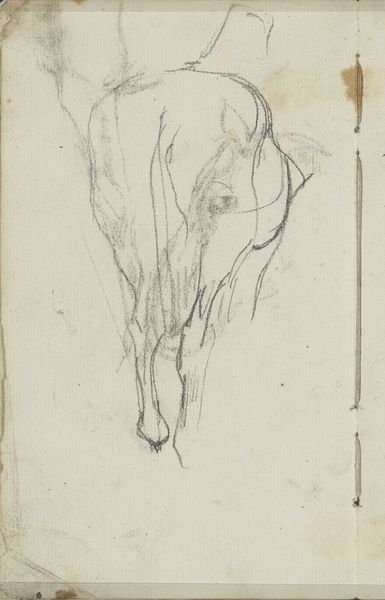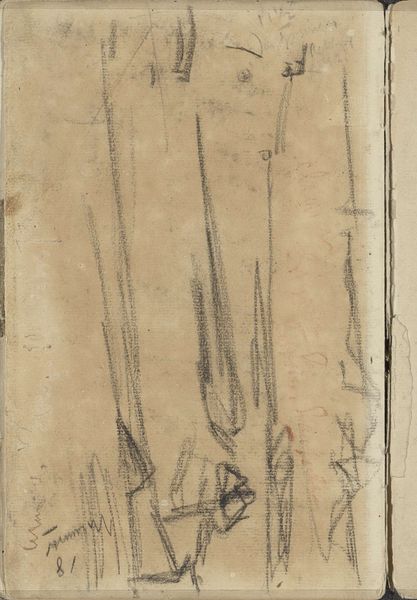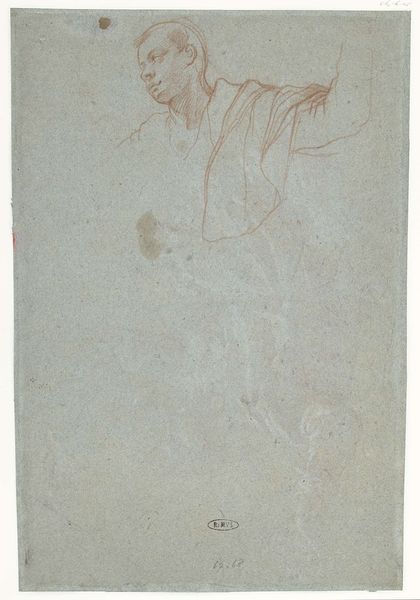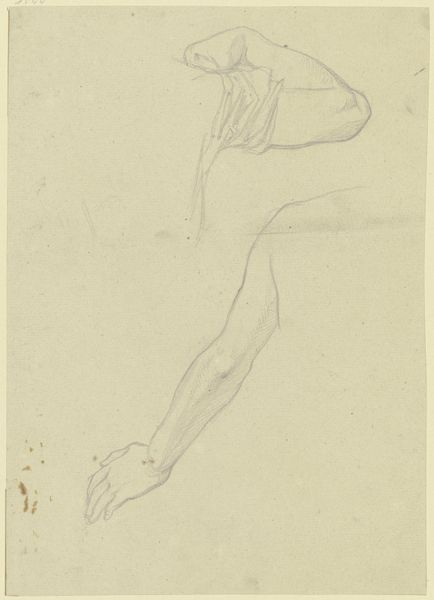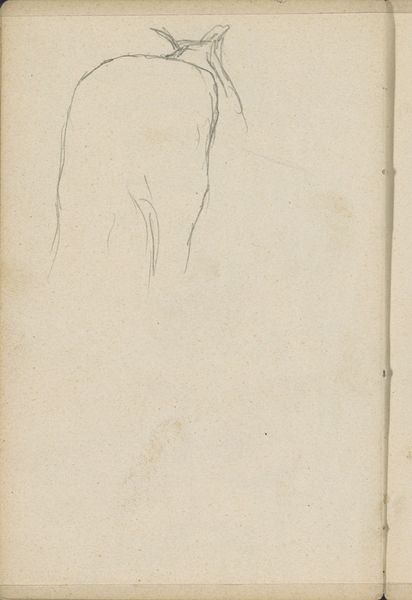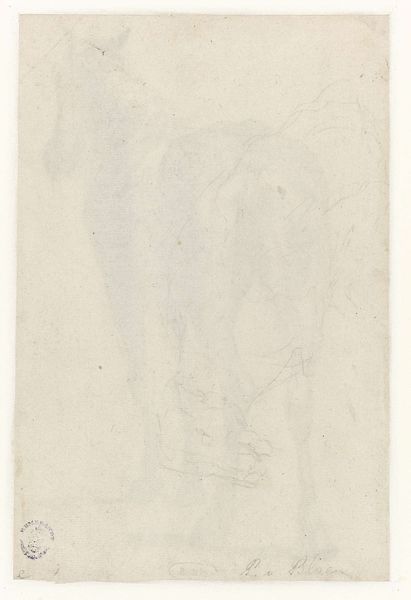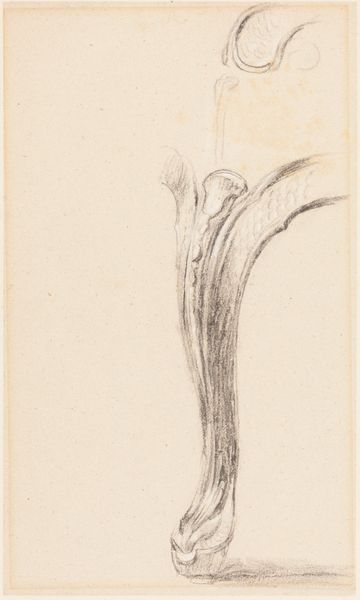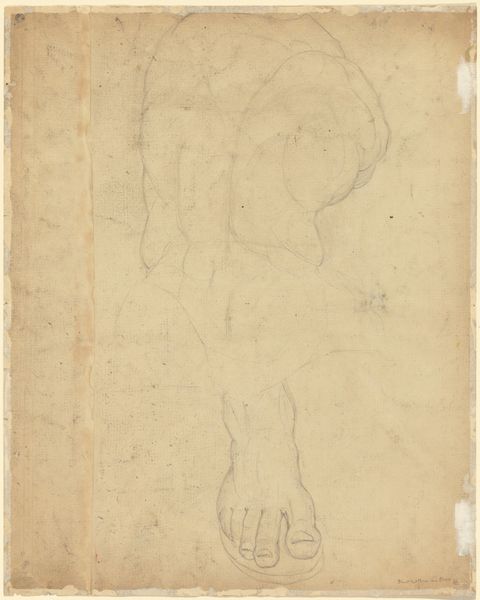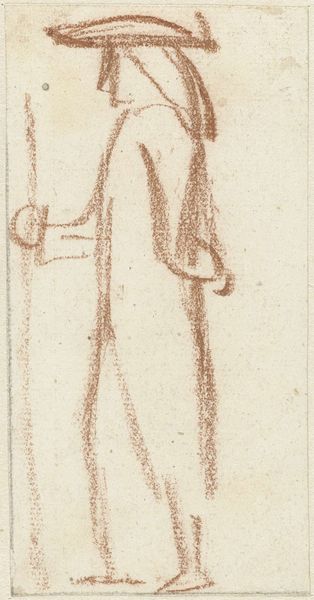
drawing, pencil
#
drawing
#
landscape
#
figuration
#
11_renaissance
#
pencil
Dimensions: 12 1/2 x 3 1/16 in. (31.7 x 7.7 cm)
Copyright: Public Domain
Curator: At first glance, it feels incomplete, almost skeletal. There's a fragility to it. Editor: Indeed. What we have here is an anamorphic drawing created sometime between 1500 and 1600, "Anamorphic Drawing of a Stag," to be precise. It's currently held at the Metropolitan Museum of Art. Pencil on paper. Quite striking in its distortion. Curator: Anamorphic...so it’s meant to be seen from a specific viewpoint to correct the image, like a hidden message revealing itself? A kind of visual riddle, loaded with Renaissance symbolism, no doubt. The stag itself, a creature often associated with nobility and grace. Editor: Precisely. And that raises interesting questions about the work's intended audience. Anamorphic art, while dazzling, was also often found in courtly settings. Were these images of power designed to impress, entertain or both? It also points towards scientific advancements slowly influencing the art. The mathematics and optics required! Curator: Right, the stag image could be laden with royal associations. It suggests a certain status to appreciate and understand such illusion, pointing to an educated elite able to decipher its symbolic layers. We tend to see the Renaissance through High Art, yet pieces like these speak of experiment and leisure for a sophisticated set. Editor: Absolutely, beyond the sheer technical skill is the question of dissemination. Who made it and, crucially, for whom? Such objects tell a more nuanced story about the role of images and entertainment during a dynamic, evolving period. How the power of art interacts with its socio-economic backdrop to me is key. Curator: I find myself dwelling on that skeletal feel once more, seeing the bare essence of the Stag archetype exposed; the form of its iconic memory is preserved, almost a ghost. It resonates with enduring themes across centuries. Editor: For me, seeing the broader historical trajectory is really key—artistic production interwoven within threads of status, knowledge, and power. The drawing serves as a valuable reminder of how art acts, not just a visual delight, but also reflecting on what Renaissance imagery actually *does* and why it matters to *us* today.
Comments
No comments
Be the first to comment and join the conversation on the ultimate creative platform.
